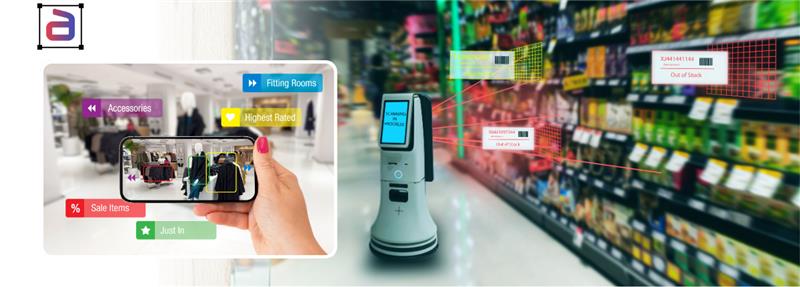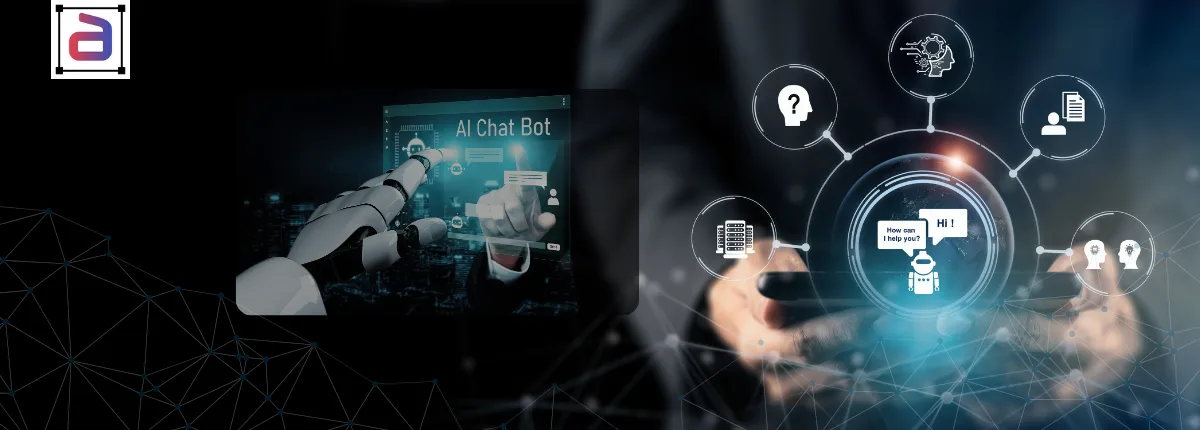Retail is evolving at lightning speed. Artificial intelligence (AI) and computer vision are no longer futuristic buzzwords—they are the engines behind personalized shopping, autonomous checkout, and immersive customer journeys. At the heart of these advances lies image and video annotation in retail. Without it, algorithms cannot identify products, understand customer behavior, or deliver seamless shopping experiences. High-quality annotation is quickly becoming the differentiator between retailers that thrive and those that fall behind.
According to PwC, 73% of consumers point to customer experience as an important factor in their purchasing decisions, but only 49% say companies provide a good experience. Bridging this gap requires smarter use of AI—and that starts with high-quality annotated data.
Why Annotation Matters in Retail CX
Every click, scan, and purchase tells a story. Annotated images and videos transform these stories into usable data for AI models. This enables retailers to:
- Power product discovery with accurate visual search.
- Deliver personalized recommendations that feel tailored, not generic.
- Optimize in-store layouts based on shopper movement and behavior.
- Enable autonomous shopping experiences without the need for checkout lines.
As McKinsey highlights, companies that leverage customer analytics are 23 times more likely to outperform competitors in new customer acquisition. Annotation ensures the analytics feeding these insights are built on accurate, bias-free datasets.
Image Annotation in Retail
Image annotation fuels many of the innovations reshaping retail:
- Product Tagging and Categorization: Annotated product images ensure catalog accuracy, reducing search frustration. Poor labeling contributes to abandoned carts and lost sales.
- Visual Search: Customers upload an image and instantly find matching items. Annotation makes this possible by teaching AI to recognize shapes, colors, and patterns. Gartner predicts that visual search will increase digital commerce revenue by 30% for retailers that effectively adopt it.
- Augmented Reality (AR): Virtual try-ons for fashion and furniture rely on annotated datasets that align digital overlays with real-world images. This improves customer confidence and reduces returns.
- Inventory Management: Annotated product images enable systems to automatically track stock levels and detect misplaced items, thereby reducing inventory costs and enhancing efficiency.
“In the age of e-commerce, accurate product data is no longer a nice-to-have—it’s the backbone of customer trust.” — Forrester Analyst
Video Annotation in Retail
Video annotation is equally transformative and adds an entirely new layer of intelligence:
- Customer Behavior Tracking: Annotated in-store video helps understand how shoppers move, what they engage with, and where bottlenecks form. These insights drive better merchandising and store design.
- Foot Traffic Analysis: Annotated video data helps retailers identify peak shopping times and optimize staff deployment.
- Loss Prevention and Security: Intelligent surveillance systems rely on annotated datasets to detect theft or suspicious behavior, reducing shrinkage.
- Personalized Video Ads: Annotated viewing data allows for highly targeted marketing campaigns, ensuring relevance and higher conversion rates.
IDC predicts that global spending on video analytics will surpass $12 billion by 2026, with a significant portion driven by retail applications.
The Technology Behind Retail Annotation
Different annotation methods bring different capabilities to retail AI, and understanding them in context helps illustrate how retailers are turning raw data into better customer experiences:
- Bounding Boxes: These simple rectangles quickly identify products, people, or objects in images and video. In retail, bounding boxes help systems detect items on shelves, recognize when stock is low, or even count the number of shoppers in an aisle. This basic yet powerful method serves as the foundation for many computer vision applications.
- Semantic Segmentation: Instead of just drawing a box, semantic segmentation labels every pixel in an image. This allows AI to distinguish between shelves, aisles, checkout counters, or even specific product zones. Retailers use this for precise shelf monitoring and planogram compliance, ensuring products are displayed correctly.
- Facial and Gesture Recognition: By annotating expressions, movements, and gestures, retailers enable responsive customer service bots, AR mirrors in fashion stores, and even real-time mood analysis. For example, annotated facial data can allow a smart kiosk to recommend products based on customer reactions.
- Polygons and Keypoints: For more detailed labeling, polygons trace irregular product shapes while keypoints mark features such as hand movements or body posture. These techniques help retailers understand how customers interact with products or displays, which feeds into layout optimization and personalized marketing.
- 3D Annotation and LiDAR: In some advanced retail environments and autonomous shopping setups, 3D annotation of spaces and objects enables automated checkout systems to track products with near-perfect accuracy.
“Computer vision is teaching retail to see. Without the right annotation methods, the promise of AI-driven shopping experiences cannot be realized.” — Retail Tech Journal
These technologies create AI systems that can “see” retail environments with remarkable clarity. For customers, that translates into faster service, more accurate recommendations, and a smoother shopping journey.
Challenges in Retail Annotation
While promising, annotation in retail faces unique hurdles that executives and AI teams must carefully navigate:
- Scale of Visual Data: Modern retailers manage catalogs with millions of SKUs and capture endless hours of video from stores and warehouses. Each image and clip needs annotation for AI systems to work effectively. Without outsourcing or advanced annotation platforms, this task quickly becomes unmanageable. IDC estimates that retailers generate nearly 40% of the world’s total video data, underscoring the scale of the challenge.
- Bias Risks: If training datasets underrepresent specific demographics, styles, or cultural contexts, AI-driven recommendations can feel unfair or exclusionary. For example, a fashion retailer whose data only reflects standard sizes may alienate customers who are plus-size. Bias-aware annotation workflows are crucial for ensuring fairness and inclusivity. As one McKinsey analyst noted, “Unaddressed bias in retail AI doesn’t just cause technical errors—it erodes customer trust and brand equity.”
- Privacy Concerns: Collecting and annotating customer data comes with significant regulatory responsibilities. Compliance with GDPR, CCPA, and other privacy laws is mandatory. Mishandling data can result in fines, lawsuits, and reputational damage. For example, a retailer fined in Europe for failing to anonymize video data saw both financial losses and negative press. Strong anonymization, secure storage, and access control are critical safeguards.
Together, these challenges highlight why image and video annotation in retail is not just about labeling images—it requires scale, fairness, and strict compliance to build AI systems that customers can trust..
The Impact on Customer Experience
High-quality annotation leads to tangible customer benefits:
- Personalization: AI suggests products customers actually want, boosting conversions and sales.
- Reduced Returns: Better product matching ensures customers get what they expect, cutting costs for retailers.
- Loyalty Building: Engaging, seamless experiences keep shoppers coming back. Bain & Company found that loyal customers are worth 10 times more than their first purchase.
Annotation in retail isn’t just about technology—it’s about creating shopping journeys that feel personal, intuitive, and trustworthy.
Industry Examples For Image and Video Annotation in Retail
- Fashion Retailers: Using annotated images to power AR try-ons, helping customers visualize outfits without fitting rooms. A global fashion chain reported a 25% reduction in return rates after deploying AR try-ons powered by carefully annotated datasets, giving customers greater confidence in their choices.
- Electronics Retailers: Leveraging annotated video analytics to optimize in-store displays and product placements. By tracking how customers interacted with displays, one electronics retailer improved product engagement by 18% and increased average transaction value.
- Grocery Chains: Using annotation to enable automated checkout and intelligent shelf monitoring, cutting checkout times dramatically. For example, grocery chains that adopted annotated AI checkout systems saw wait times decrease by 40%, thereby boosting customer satisfaction and repeat visits.
- Autonomous Shopping: Cashier-less stores, such as Amazon Go, rely on annotated video feeds to recognize products, track movement, and process purchases seamlessly. Industry reports highlight that autonomous shopping can reduce operational costs by 10–15% while delivering unmatched convenience.
These examples demonstrate that annotation is not just enhancing customer experiences—it is fundamentally redefining retail engagement and efficiency, giving early adopters a clear competitive edge.
The Role of BPO in Retail Annotation
For most retailers, annotating millions of images and videos in-house is unfeasible and often distracts from their core business priorities. This is where BPO in image and video annotation in Retail creates real value by combining scale, expertise, and compliance under one umbrella:
- Scalability: Distributed teams across regions can handle massive annotation volumes quickly, ensuring projects don’t stall due to resource shortages. This agility is crucial during seasonal peaks, such as holidays, when e-commerce volumes surge.
- Cost Efficiency: Outsourcing reduces HR and infrastructure expenses while freeing up internal teams to focus on innovation, marketing, and customer engagement. According to Deloitte, companies can reduce operating costs by up to 30% by leveraging specialized BPO partners.
- Quality Assurance: Leading BPO providers embed multi-layer QA frameworks with gold standard datasets, consensus reviews, and bias-aware checks. This ensures that the annotated data powering retail AI is both accurate and fair, thereby reducing the risks of poor recommendations or customer alienation.
- Compliance and Security: Adherence to global standards, such as GDPR, CCPA, SOC 2, and ISO, safeguards sensitive customer data and builds trust. With increasing regulatory scrutiny on data usage, compliance-first outsourcing is becoming a non-negotiable.
- Domain Expertise: BPO partners often train annotation teams for specific verticals, such as fashion, electronics, or grocery, bringing valuable context to datasets. This vertical focus ensures that the annotation output directly supports business outcomes, such as higher conversion rates or improved store efficiency.
Deloitte notes that over 70% of organizations outsource to improve efficiency and access specialized expertise—and retail is no exception. For executives, BPO in retail annotation is not just a cost-saving tool but a strategic lever for competitive advantage.
Annotera’s Expertise in Image and Video Annotation in Retail
At Annotera, we provide image and video annotation services tailored to retail, helping brands harness AI to transform customer experience. Our capabilities are designed to address the unique challenges retailers face when working with large volumes of visual data:
- Product tagging, catalog labeling, and AR-ready annotation: We help retailers maintain accurate, searchable catalogs that fuel e-commerce platforms and AR try-ons, reducing customer frustration and returns.
- Video annotation for customer behavior analysis and autonomous shopping: By annotating in-store videos, we gain insights into shopper movement, product engagement, and even cashierless checkout experiences that redefine convenience.
- Bias-aware workflows and human-in-the-loop QA: Our multi-layer quality checks reduce errors, flag inconsistencies, and ensure fairness in recommendations, protecting brand reputation and customer trust.
- Scalable teams and compliance-first processes: With global annotation capacity, we manage seasonal surges while adhering strictly to GDPR, CCPA, and ISO standards, safeguarding sensitive customer data.
We combine technology, expertise, and compliance to deliver datasets that are not only accurate but strategically valuable. With Annotera, retailers don’t just get annotated data—they get the foundation for transformative customer experiences, stronger personalization, operational efficiency, and long-term competitive advantage.
Executive Takeaway
Annotation in retail is no longer optional—it’s the new competitive differentiator. Retailers who invest in high-quality image and video annotation will deliver smarter, faster, and more personalized customer experiences. Those who don’t risk being left behind in a digital-first economy.
“The retailers that win tomorrow are the ones investing in intelligent data today.” — Retail Industry Expert
Final Thoughts
The future of retail is visual, intelligent, and customer-first. Image and video annotation are at the heart of this transformation, powering personalization, autonomous shopping, and frictionless journeys.
Ready to revolutionize your customer experience with annotation? Partner with Annotera today and explore how our retail annotation solutions set you apart.


